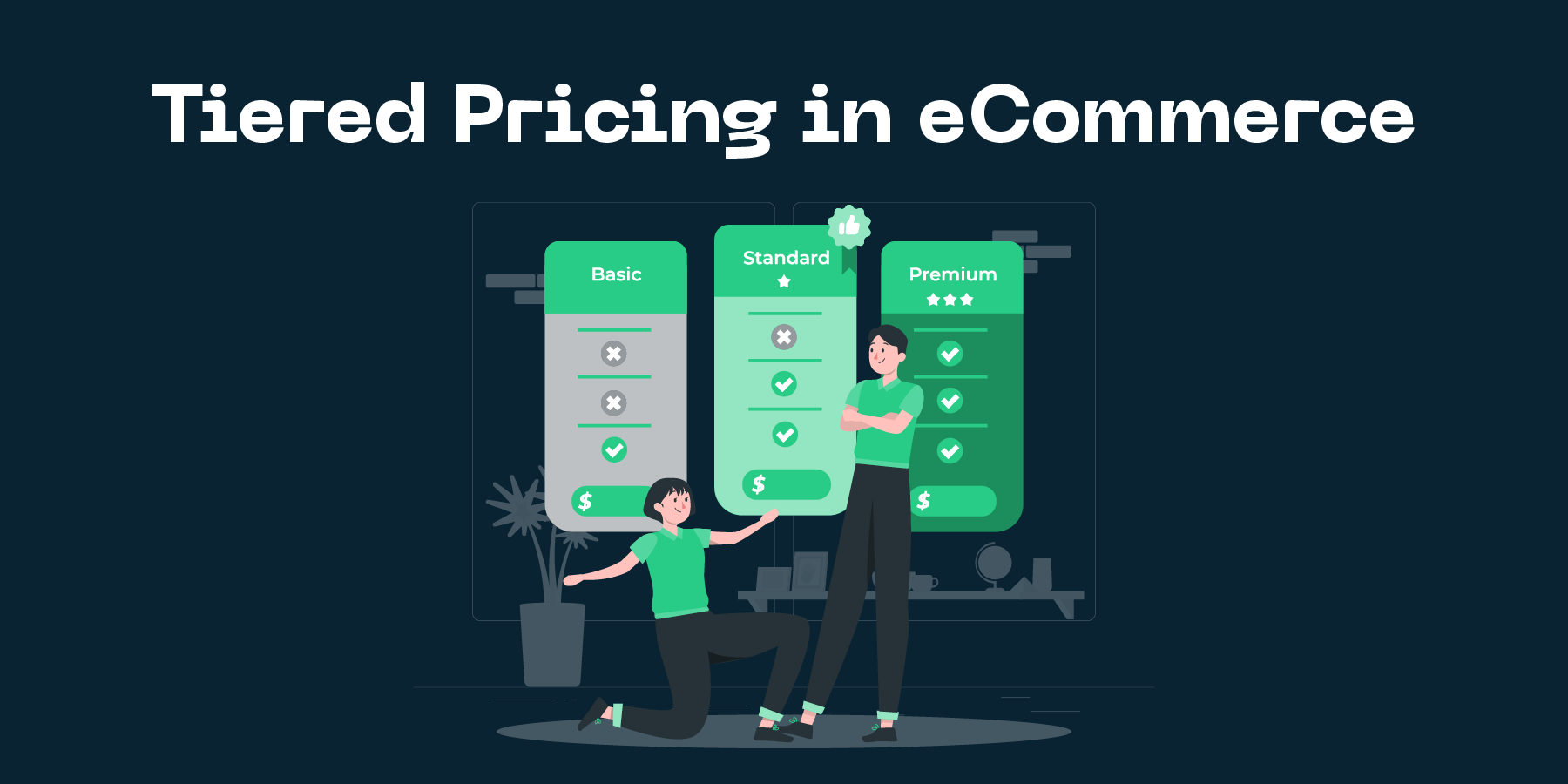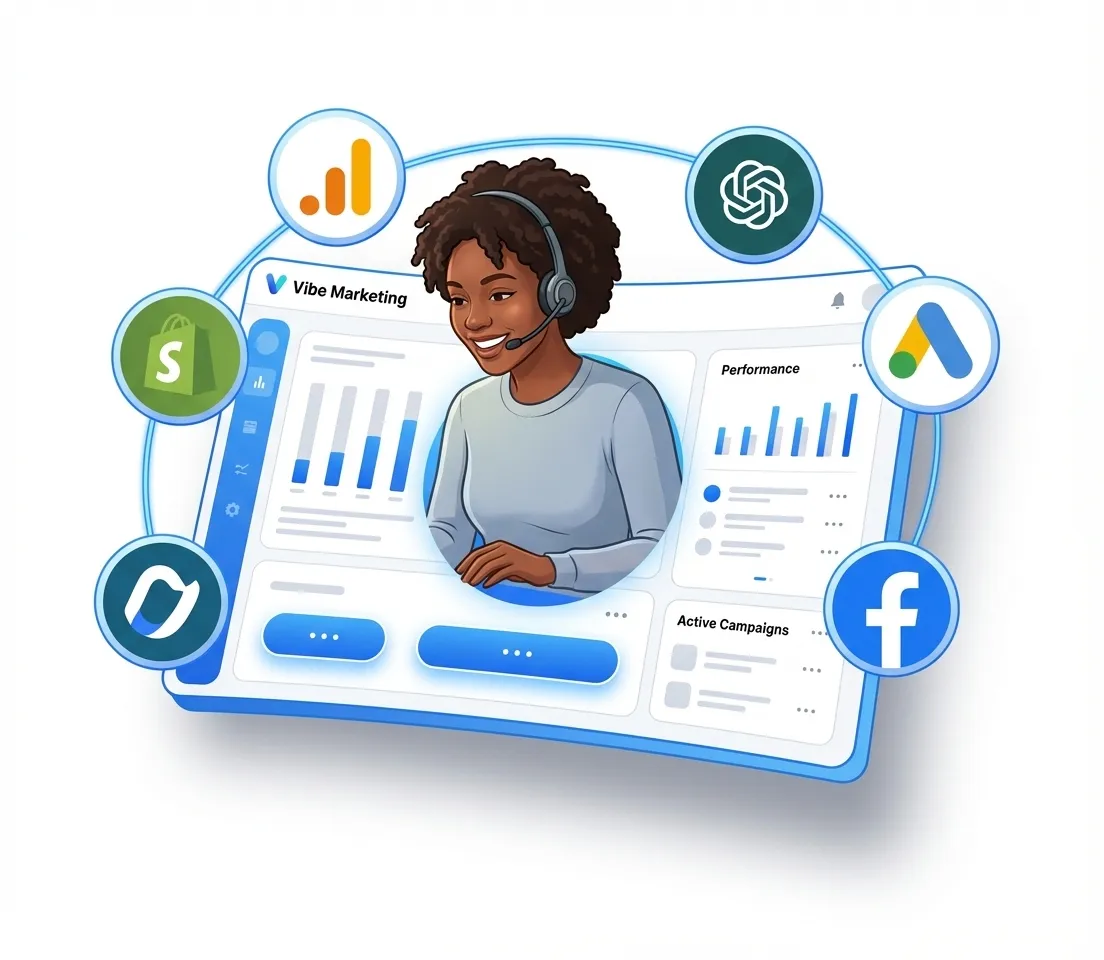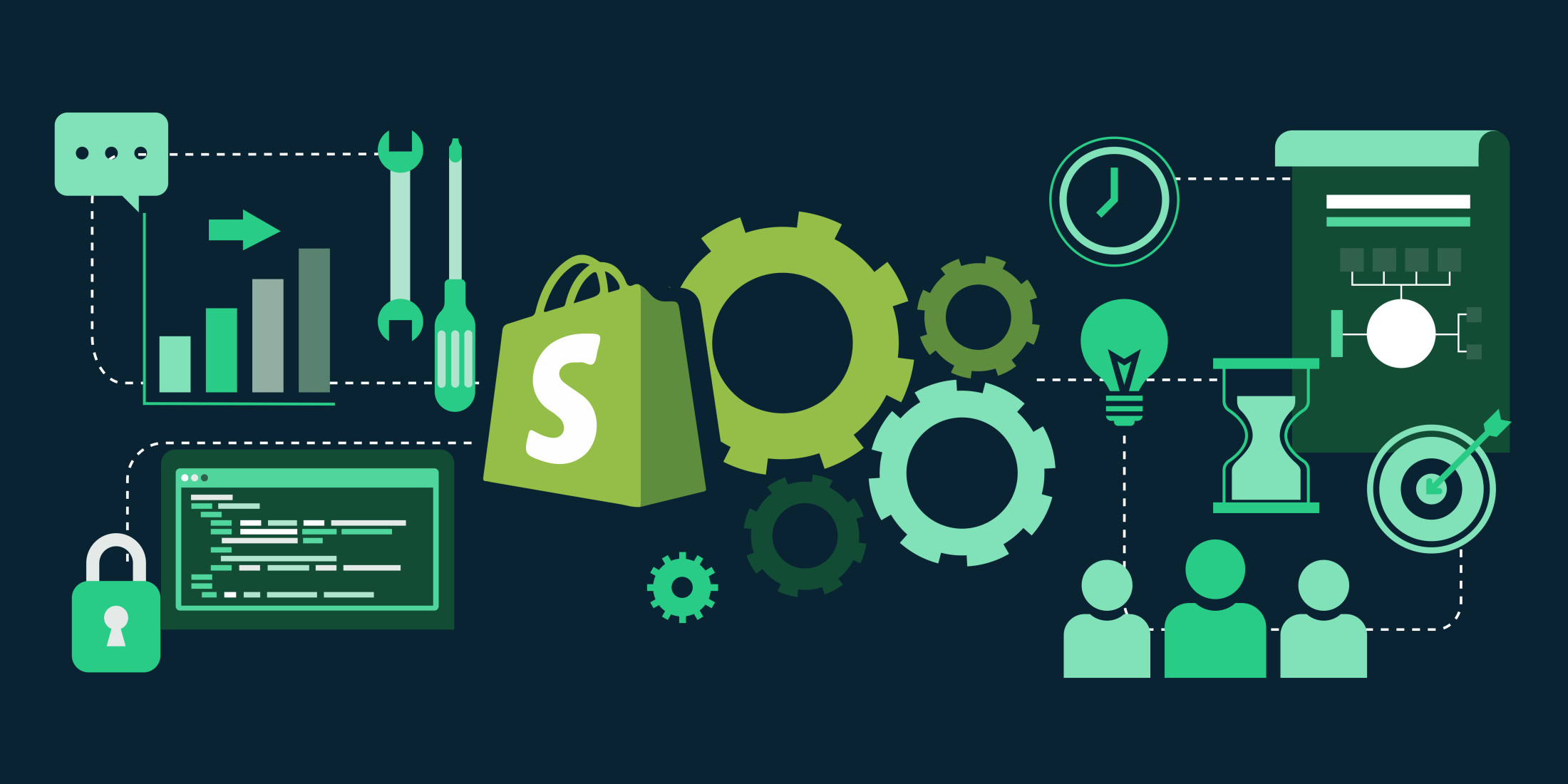Benefits and Advantages of Tiered Pricing for Shopify Stores

Introduction to Tiered Pricing
What is Tiered Pricing
In simple terms, tiered pricing is a pricing strategy that involves selling a product or service at different prices based on quantity or predefined tiers. Essentially, the per-unit cost decreases as the customer purchases more of a given product, encouraging them to buy in larger quantities. This strategy is widely used in eCommerce due to its ability to influence consumer buying behavior and increase the average order value.
Implementing tiered pricing in your eCommerce store can work wonders in driving higher conversions. This is because it taps into the psychological principle of perceived value. When customers see they can get more for less by moving up a tier, they are more likely to increase their purchase quantity. This not only leads to increased sales but can also foster customer loyalty, as buyers feel they are getting more bang for their buck, thereby enhancing their overall shopping experience.
Moreover, tiered pricing offers flexibility and simplicity that benefits both the eCommerce store owner and the customer. It's easier for you as a marketer to implement, and it's easy for customers to understand. Plus, it gives customers the power to choose what best fits their needs and budget. Thus, incorporating tiered pricing into your eCommerce strategy can be a game-changer for your business's growth and profitability.
Importance of Tiered Pricing in eCommerce
Tiered pricing is a crucial strategy in the eCommerce universe that can significantly boost your conversion rates and overall sales. Essentially, tiered pricing is the practice of offering different prices for different levels or quantities of a product, which encourages customers to buy more of a product or service by reducing the price-per-unit as the order quantity increases. This strategy not only helps improve your eCommerce revenue, but also offers a way to effectively manage your inventory.
Why is Tiered Pricing Important?
At the heart of any successful eCommerce business lies a well-thought-out pricing strategy. Tiered pricing stands out as it benefits both the business owner and the customer. For customers, they get to enjoy savings when they buy in bulk, which can encourage larger orders and repeat business. For eCommerce store owners, you can move more products, reduce stock holding costs, and enhance profitability.
Importantly, tiered pricing also allows eCommerce businesses to better cater to different customer segments. Not all customers have the same purchasing power or needs. Offering products at various price points can attract a wider range of customers, from those who are budget-conscious to those willing to spend more for additional features or quantities. Hence, tiered pricing isn't just a tool to increase sales, it's a powerful strategy for customer acquisition and retention.
Understanding the Benefits of Tiered Pricing
Encourages Bulk Purchases
One of the pivotal benefits that tiered pricing offers to eCommerce businesses is that it encourages bulk purchases. When customers see that they can get a better deal or save more money by buying a larger quantity of a product, they are often motivated to do so. This helps eCommerce store owners to increase their average order value and ultimately, their overall revenue. Not only does this pricing strategy push more sales, but it also aids in reducing inventory holding costs.
Moreover, tiered pricing effectively capitalizes on the consumer's perception of value. By offering a lower unit price at higher quantities, customers perceive they are getting more value for their money. This perception can be a powerful motivator, driving customers to spend more on their purchases than they originally intended. Furthermore, it helps in building customer loyalty as customers feel rewarded for making larger purchases.
Lastly, it's important to note that tiered pricing isn't a one-size-fits-all solution and must be strategically implemented. The success of a tiered pricing strategy ultimately depends on understanding your customers, their buying behaviors, and what they perceive as valuable. With these insights, you can create a tiered pricing model that not only boosts your sales but also enhances your customer experience.
Increases Perceived Value
One of the significant benefits of tiered pricing is the ability to increase the perceived value of your products or services. This pricing model presents customers with different options, each with its own set of features, benefits, and costs. As such, the customer is more likely to perceive higher-priced tiers as offering more value - whether in terms of product quality, quantity, or additional features. This strategy can, therefore, lead to a substantial increase in your average transaction value and overall revenue.
Moreover, tiered pricing allows for the effective segmentation of your customer base. By offering various price points, you can cater to a wide range of customers having different needs and budgets. It gives customers the autonomy to choose a product or service that offers the best value for their money. Hence, not only does tiered pricing boost the perceived value, but it also enhances customer satisfaction and loyalty, which are critical for the long-term success of any eCommerce business.
In conclusion, by understanding the benefits of tiered pricing, eCommerce store owners and marketers can strategically set their prices to maximize profits. It works wonders by increasing the perceived value, attracting a broad customer base, and enhancing customer satisfaction. Thus, tiered pricing should be a key component in your eCommerce pricing strategy to drive your conversion rate and achieve sustainable growth.
Implementation of Tiered Pricing and its Impact on Conversion Rates
How to Implement Tiered Pricing
Implementing tiered pricing in your eCommerce store is a strategic move that can significantly increase your conversion rates. This pricing model essentially involves offering different prices for different levels or 'tiers' of products or services. The first step in implementing this structure is to analyze your product portfolio and segment it into different categories based on factors like value, demand, production costs, and market competition.
Deciding the tiers is the next crucial step. This could be based on quantity (buy more, pay less), value (higher value, higher price), or features (more features, higher price). The basic tier should cover your production costs and a small profit, while the higher tiers should progressively offer more value, persuading customers to upgrade.
In terms of impact on conversion rates, tiered pricing provides an illusion of choice and control to the customers, making them more likely to purchase. It allows them to choose a product that fits their budget, creating a win-win situation for both the business and the customer. Furthermore, it's an effective way to segment your market and target different customer groups with specific pricing tiers. Remember, the key is to structure your tiers so that the perceived value increases significantly with each tier, nudging customers towards the higher-priced options.
Analyzing the Positive Impact on Conversion Rates
When analyzing the positive impact on conversion rates, it's important to consider the advantages of implementing tiered pricing. This strategy, which involves offering different levels of service or product bundles at varying price points, can be incredibly effective in e-commerce settings. One of the key reasons is that it gives customers the power of choice, allowing them to select the version of your product or service that best meets their needs and budget.
Conversion rates can significantly increase when customers feel they have control over their purchasing decision. By offering multiple tiers, you're essentially providing multiple chances for a conversion within a single customer interaction. If a customer is not willing or able to invest in your highest-priced tier, they may be enticed by the less expensive options. This ensures you don't lose potential sales by only offering a single, potentially prohibitive price point.
It's also worth noting the psychological impact of tiered pricing. The presence of a higher-priced option can make the lower-priced tiers seem even more attractive, and offering an ultra-premium tier can even increase conversions in your mid-level tiers. In other words, tiered pricing can help guide customers towards making a purchase, even if it's not the most expensive option you offer. It's a subtle but powerful way to boost your e-commerce conversion rates.
Case Study: Success Stories of Tiered Pricing in eCommerce
Store A's Success with Tiered Pricing
One of the most compelling success stories in eCommerce comes from Store A, which achieved remarkable results with tiered pricing. This approach, which offers customers different pricing levels or tiers for different quantities or features, proved to be a game-changer in their business model.
Store A noticed that their conversion rate was stagnating, despite having a quality product and a strong reputation in the market. They decided to experiment with tiered pricing, offering their customers more value for purchasing larger quantities. They offered three tiers: a single product at full price, a bundle of products for a slightly discounted rate, and a larger bundle at an even greater discount.
The results were astonishing. Store A saw a significant increase in their conversion rate, with many customers opting for the higher-priced tiers to take advantage of the perceived savings. This illustrates the power of tiered pricing in the eCommerce environment — by providing customers with options and a sense of getting a "bargain" for higher tiers, stores like Store A can drive their sales and conversions higher. This case study serves as a strong affirmation as to why tiered pricing works wonders in eCommerce.
Store B's Conversion Rate Growth with Tiered Pricing
Tiered pricing is a powerful strategy that has been proven to significantly boost ecommerce conversion rates. A shining example of this success is Store B. By implementing a tiered pricing structure, Store B saw an impressive growth in its conversion rate. The store offered different pricing levels for its products based on quantity, bringing in a variety of customers, from those seeking individual items to bulk buyers. This strategy encouraged customers to buy more, thus directly driving an increase in sales and conversion rates.
Why was tiered pricing so successful for Store B? The answer lies in the psychology behind consumer purchasing decisions. Customers like to feel they are getting a good deal, and tiered pricing taps into this sentiment by offering discounts for larger purchases. This not only incentivizes customers to spend more, but also creates a sense of exclusivity and rewards loyalty, which enhances customer retention rates. In turn, this leads to more repeat business and a steady rise in conversion rates.
Store B's success story with tiered pricing is not an isolated instance. Ecommerce businesses across the world are adopting this strategy and reaping its benefits. By understanding your customer base and appropriately structuring your pricing tiers, you too can leverage this strategy to boost your conversion rates and ultimately, your profits.
Conclusion: Why eCommerce Brands Should Consider Tiered Pricing
Enhanced Customer Satisfaction
In conclusion, embracing tiered pricing in your eCommerce business is not only a practical strategy to maximize profits, but also a powerful tool to enhance customer satisfaction. This pricing strategy creates a sense of empowerment amongst customers, giving them the liberty to choose a product or service that aligns with their budget and needs. The flexibility it offers resonates with a broad customer base, which invariably leads to a more satisfied and loyal clientele.
Enhanced customer satisfaction is directly linked to the success of an eCommerce brand. A happy and satisfied customer is more likely to be a repeat customer, recommend your brand to others, and leave positive reviews. All these actions contribute significantly to boosting your brand’s reputation, increasing sales, and growing your customer base. By implementing a tiered pricing strategy, you not only meet the diverse needs of your customers but also give them high perceived value, thus ensuring their continued patronage and overall satisfaction.
Moreover, tiered pricing is an intuitive and effective way to simplify the decision-making process for customers, thereby increasing conversion rates. It eliminates the often paralyzing effect of a single price point, giving customers a range of options to choose from. This not only expedites the purchasing decision but also enhances the overall shopping experience, leading to a higher level of customer satisfaction.
Increased Revenue Potential
One of the most significant advantages of tiered pricing in eCommerce is the increased revenue potential. By offering multiple price points, businesses can cater to a wider range of consumers, therefore increasing the chance of making a sale. Whether it's a budget-conscious customer looking for the most affordable option or a high-end consumer willing to pay more for premium features, tiered pricing ensures that there's an offer that appeals to everyone.
Moreover, tiered pricing isn't just about increasing the number of sales, but also about maximizing the value of each sale. By structuring your pricing tiers strategically, you can encourage customers to opt for higher-priced options, thereby increasing your average order value. For instance, if the perceived value of the premium tier far outweighs its additional cost, consumers may be more inclined to choose it over the basic tier. Hence, not only can tiered pricing help you attract more customers, it can also help you earn more from each customer.
In conclusion, if you're an eCommerce brand looking to boost your conversion rates and overall revenue, consider implementing tiered pricing. It's an effective strategy that allows you to cater to varying consumer needs while maximizing your profit potential. It's a win-win situation for both the business and its customers.



